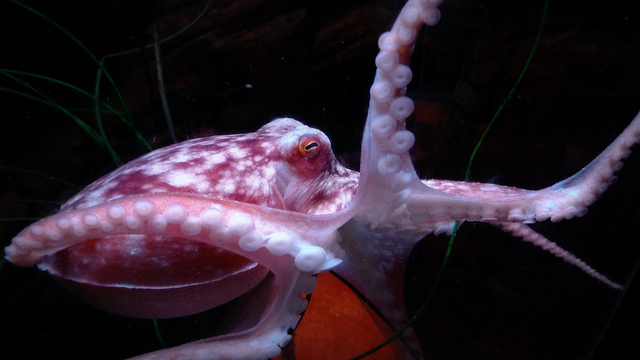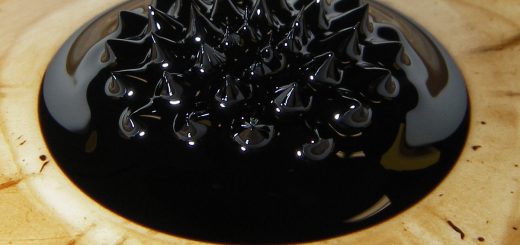A Robot in Squid’s Clothing

Trendsetting octopuses have inspired a new robotic skin that changes colour, detects pressure and even stretches. Scientists at Cornell University and the Italian Technology Institute looked to the ocean, modelling their material on certain octopus and squid species that change the colour and texture of their skin to camouflage with their environment1.
The robot skin is made of three main layers of specialised silicone. The silicone makes the skin soft, while the layering allows great flexibility, so that the material can stretch to up to five times its original size2.
Phosphorescent powders were mixed into the silicone of the middle layer so that the material glows under a high electric field. Different colours are created by introducing different elements: adding copper, for example, produces a blue-tinted glow. This is powered by an electrically conductive layer of silicone underneath. The outside layer is a tougher silicone for insulation. This provides protection from the high voltage of the other layers, allowing the material to be safely handled, even stretched.
Changes occur in the electric field of the glowing layer as the material stretches and so, by monitoring these changes, the glowing patches can even be used as highly sensitive pressure sensors.
While this luminescent, flexible skin is mesmerising to watch, some issues remain with the early model. Currently, the material is capable of displaying only a few dozen coloured squares. Yet there are hopes that eventually the resolution will be at the level of a computer screen and so could be used in wearable electronic gadgets that fit snugly to each individual’s arm3.
More intriguing, however, are the team’s hopes for how the material may alter our very relationship with robots. The changeable skin could allow soft robots to adapt to their environment, for example camouflaging with their surroundings. These robots could also use their colours to suggest mood, making themselves appear friendly or aggressive, just like an octopus would do.
And of course, as head roboticist Robert Shepherd points out, soft robots have ‘a great potential for human-robot interaction’ simply because they are ‘safer’ and even ‘feel nice’. Will robots with glowing octopus-inspired skin become man’s new best friend?
Edited by Jessica Bownes
References
- http://www.techtimes.com/articles/138563/20160304/glowing-octopus-skin-for-robots-can-spell-future-of-wearable-technology-advertisement-and-more.htm
- http://futurism.com/this-robotic-skin-can-glow-in-the-dark-change-colors-and-stretch-like-an-octopus/
- http://www.popularmechanics.com/science/a19756/stretchy-octopus-skin/










